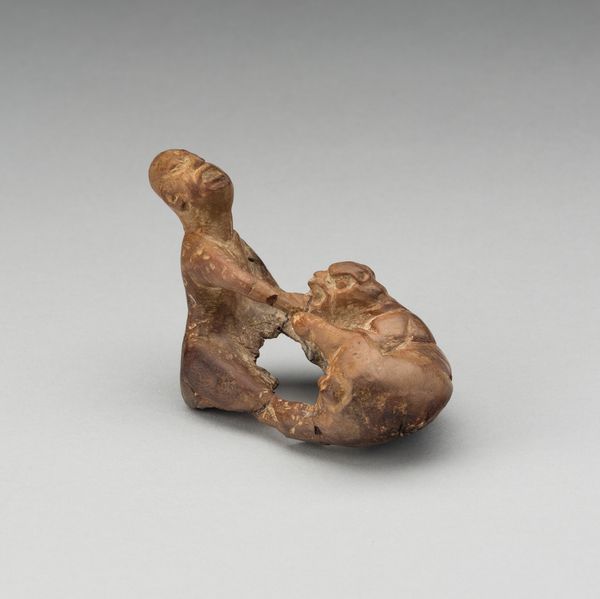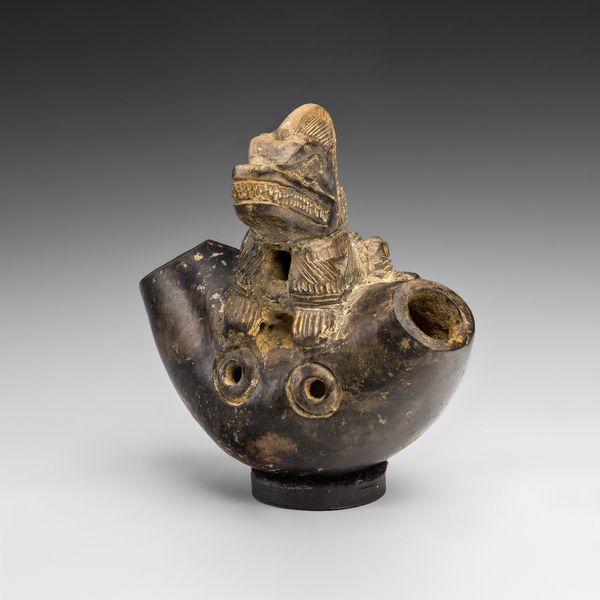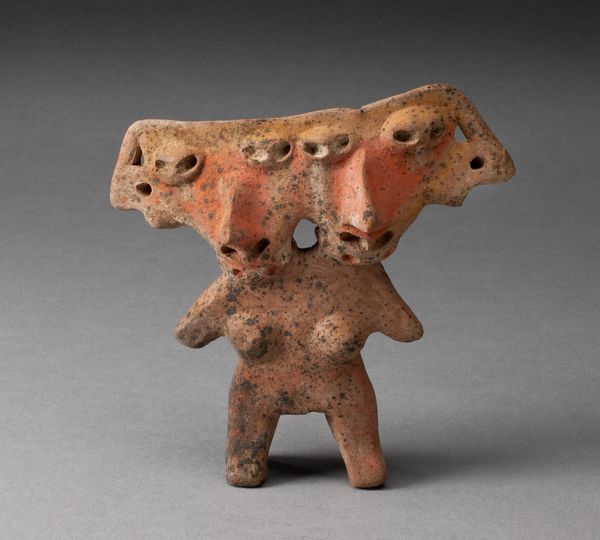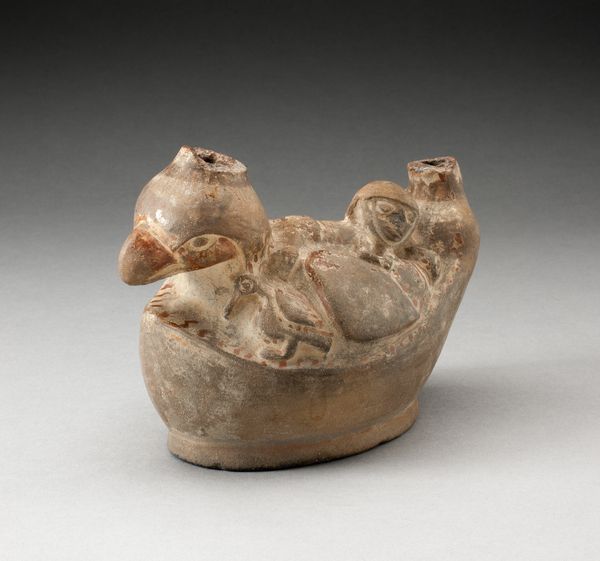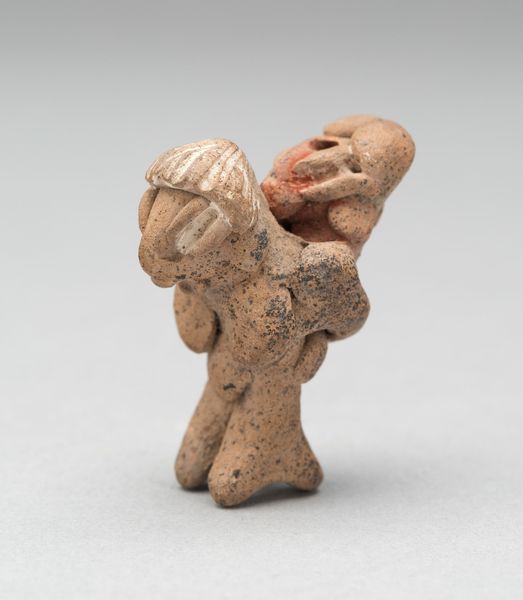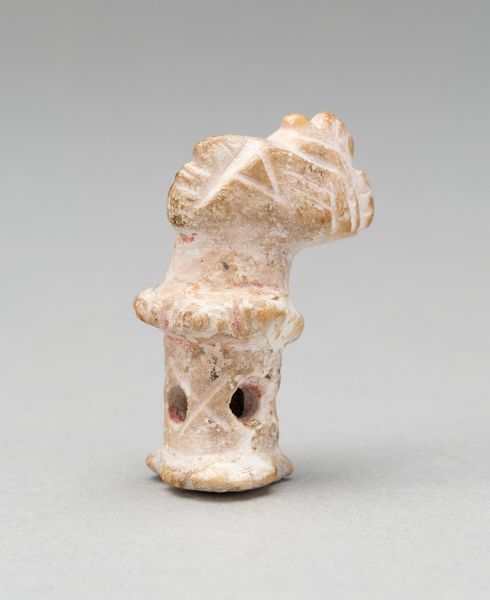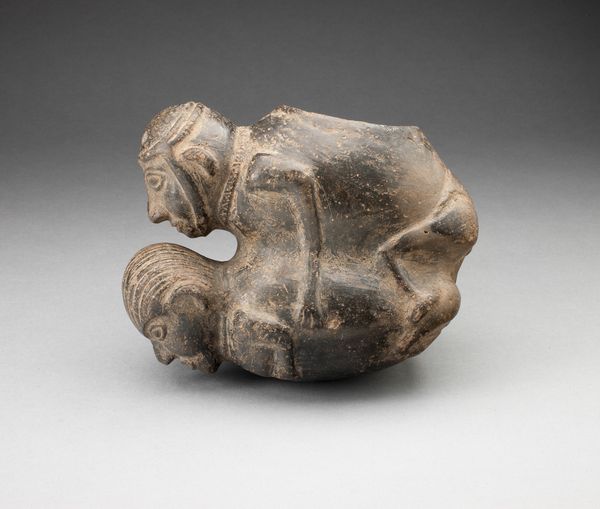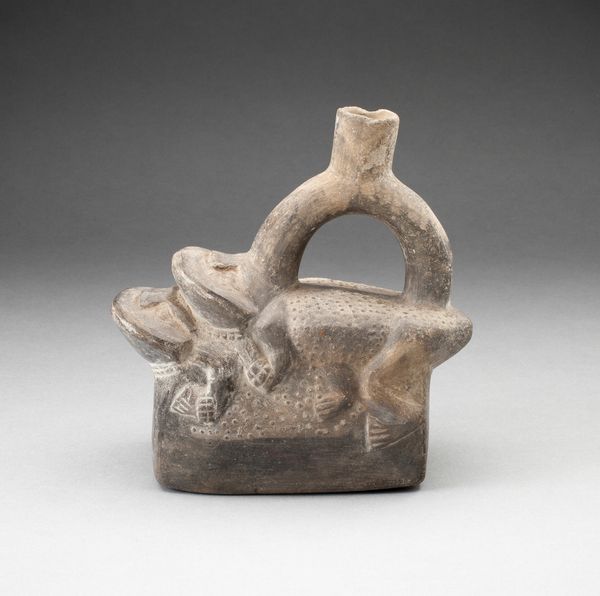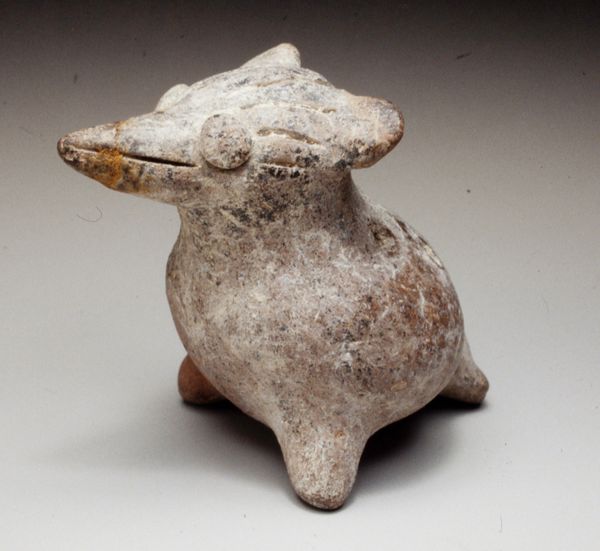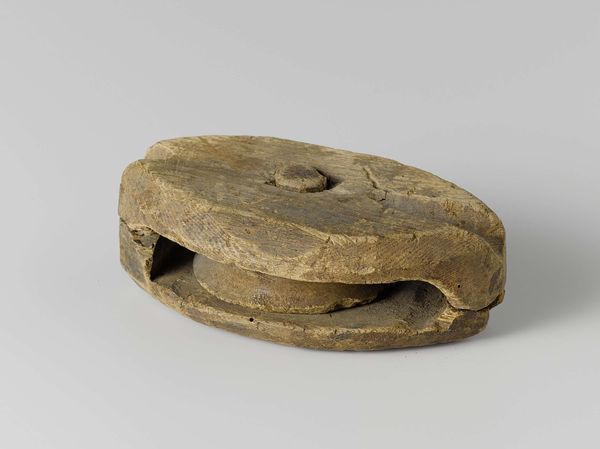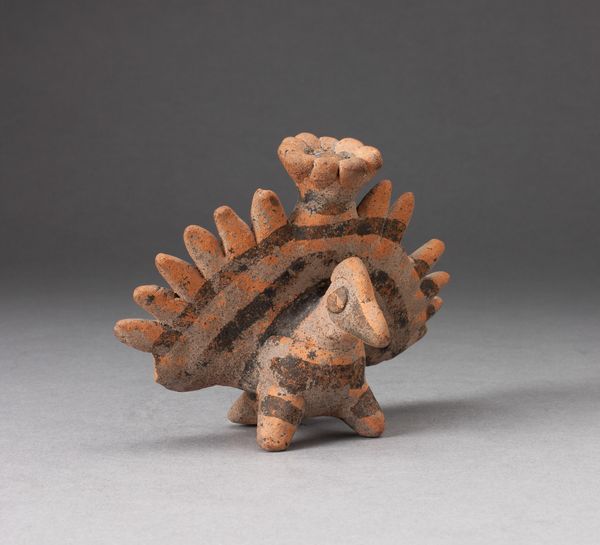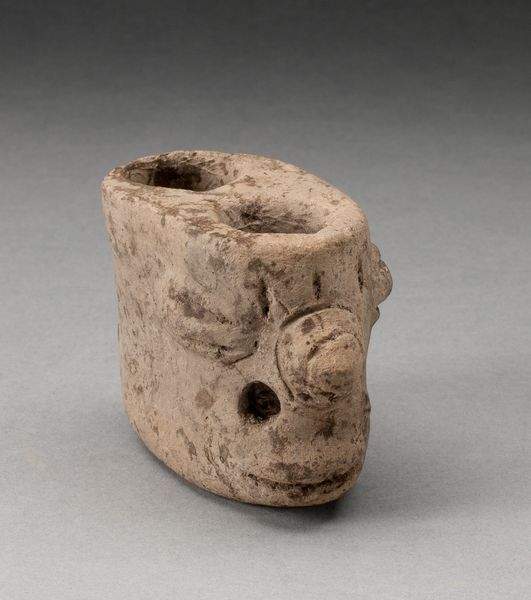
Miniature Group of Four Figures in a Circle with Linked Arms c. 500
0:00
0:00
ceramic, sculpture, terracotta
#
ceramic
#
figuration
#
sculpture
#
terracotta
#
indigenous-americas
Dimensions: H. 13.5 cm ( 3/8 in.)
Copyright: Public Domain
Editor: This ceramic sculpture, "Miniature Group of Four Figures in a Circle with Linked Arms," comes from the Chupícuaro culture around the year 500. It's quite small, a tightly knit group of figures, seemingly suspended in a communal embrace. What do you see in a piece like this? Curator: Well, this piece really speaks to the role of art in social cohesion and identity formation. Consider how pre-Columbian societies like the Chupícuaro used ceramics not just for utilitarian purposes, but as tools for visualizing and reinforcing their social structures and beliefs. The fact that these figures are linked, forming a circle, points to the importance of community, of collective action, in their society. Do you think that this particular kind of miniature ceramic object could have been meant for ceremonial purposes or for personal ritual? Editor: That makes a lot of sense! I hadn’t considered its potential function. Thinking about it as a ceremonial object, I guess its scale and circular form must have made it very powerful, and potentially transportable. Would that be related to a political aspect as well? Curator: Absolutely. The representation of linked figures might reflect political alliances or kin-based social bonds, solidifying communal identity through public display and private contemplation. Museums, of course, play a crucial role in shaping our understanding of these artifacts, curating and interpreting them within a specific narrative that affects their cultural reception. Think about how exhibiting it impacts our interpretation compared to if we knew its specific burial context. Editor: That's a powerful point about the museum's role! It really shifts the way you see it – it's not just an object, it's a reflection of social bonds being reinterpreted through a contemporary lens. Curator: Exactly. It also raises questions about the ethics of collecting and displaying artifacts from other cultures. The “objectivity” of art history is constantly shaped by cultural forces. Editor: It really makes you consider how an object's meaning evolves based on who's interpreting it and where. Thank you. Curator: My pleasure. This type of analysis helps us consider that art making and viewing practices change the historical and social trajectory of art.
Comments
No comments
Be the first to comment and join the conversation on the ultimate creative platform.
